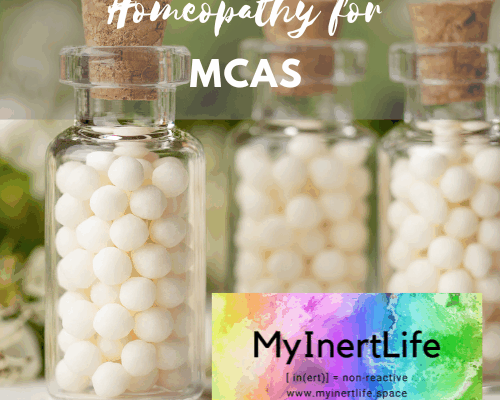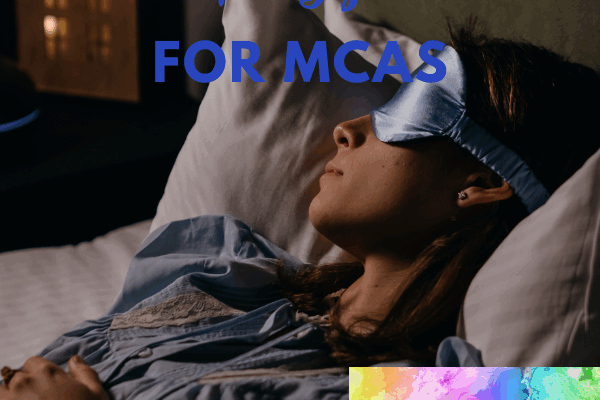I’ve been trying to eliminate all unhealthy plastics in my life because I have elevated thyroid titers. In a prior post, I explored BPA and BPS in plastics. This is an update on that post to include new information I’ve learned in my quest for health!
As an Amazon Associate, I earn from qualifying purchases.
Table of Contents
What are phthalates?
“Phthalates found in some plastics have been shown to decrease thyroid function and changes in the thyroid gland while Bisphenol A (BPA) decreases thyroid receptor site sensitivity, causing thyroid resistance.” – Source
After changing brands of sparkling water and changing water bottles from plastic to glass, I next looked at my mouth splint. I have a mouth splint because I grind my teeth at night, and it keeps my teeth from grinding on each other. The splint I was prescribed two years ago (within the same time period that I developed my thyroid nodules) is made to two kinds of plastic. If you think about it, grinding your teeth on a piece of plastic all night long every day adds up to a log of plastic exposure. And it turns out that the plastics in my splint are not compatible with my biology. So, I am going to switch to one made of lucite.
What is MCAS?
Mast Cell Activation Syndrome (MCAS) is a chronic condition that affects all organ systems. MCAS is serious and disabling and people with MCAS experience often significant and debilitating symptoms daily, including anaphylaxis, which can be fatal.
MCAS is often found in combination with other chronic conditions such as Ehlers-Danlos Syndrome (EDS) and Postural Orthostatic Tachycardia Syndrome (POTS).
Frequently healthcare providers do not know about MCAS, and the tests for MCAS are problematic because they are not uniformly reliable. MCAS can be difficult to manage. Treatments include blocking mast cell mediators with anti-histamines and mast cell stabilizers, as well as avoiding triggers.
Check out this post on how to manage MCAS.
The bucket theory
The bucket theory offers a helpful analogy for understanding symptom reactions with MCAS.
Think of your body as an empty bucket that you want to keep from overflowing. Different foods and activities fill your histamine bucket at different speeds but they combine to form the total level of histamine in your body (how full your bucket is). A fuller bucket means you have more histamine symptoms. When you manage triggers, reduce exposure to known triggers, and take medications and supplements to reduce histamine, you can manage the level of your bucket.
What are unhealthy plastics?
Some plastics are safer than others. If the plastic item is stamped with a number on the bottom you can use that number to discern if the plastic is healthy. Here is a breakdown of plastics by number.
Unhealthy plastics to avoid
#1 plastics – PETE or PET
#3 – PVC
#6 – polystyrene
#7 – polycarbonate plastics or PC, which is usually clear, including clear Nalgene bottles. Even if it is BPA free the plastic has likely been made with BPS.
Safer plastics
These plastics have never had BPA in the first place:
#2 – HDPE (High-Density Polyethylene): They are very chemically resistant and that is why they are normally used in milk, juices, yoghurt, water and garbage, and supermarket bags; some Nalgene bottles are made of this material.
#4 – LDPE (Low-Density Polyethylene): It is a type of plastic that does not release any chemicals into the water, one of the safest that exists, so there is no danger in its reuse.
#5 – Polypropylene is a durable, rigid plastic with less likelihood of chemical leaching compared to PEX.
PEX – PEX pipe is part of a water supply piping system that has several benefits over metal pipe or rigid plastic pipe systems. It is flexible, and resistant to scale and chlorine. PEX pipe doesn’t corrode or develop pinholes. Plus, it is faster to install than metal or rigid plastic and has fewer connections and fittings.
#7 – ABS – if it is opaque it is considered safer, and is the same plastic that Lego bricks are made of. Another #7 plastic is Nylon, which is opaque, and safer.
Lucite, acrylic, or plexiglass – polymethyl methacrylate; from what I have read these plastics not made of BPA and it doesn’t break down from contact with water.
Polyurethane – is considered to be completely inert and harmless to humans.
Thermoplastic polyurethane (TPU) – is a non-toxic and 100% food-safe material. TPU does not contain any chemicals that interfere with endocrine and hormone systems, nor does it contribute to PH change in soil or water. It contains no dangerous ingredients according to REACH Compliance (EC) No 1907/2006.
Safest options
Silicone – no known health hazards.
Glass – no known health hazards.
Stainless steel – no known health hazards.
Know your typical symptom progression
Knowing your symptom progression in a symptom flare is the key to developing your own rescue plan. In this post, I discuss how to determine your own symptom progression. Once you know what typically happens in your symptom progression you can design a rescue plan to address those symptoms.
Get my free ebook, symptom log, and meal plan!
Want a tool to easily keep track of your symptoms? Sign up for my newsletter and you will receive my free 50-page ebook of lower-histamine, grain-free, sugar-free, Keto recipes, my free symptom log, and a free two-week meal plan!
Sign up for the SSP!
The Safe and Sound Protocol (SSP) is a listening therapy based on Polyvagal Theory created by Stephen Porges to unlock your ability to think, feel, and connect better through nervous system regulation. You use the SSP via an app on your phone and listen with over-the-ear headphones to specially filtered music that heals the nervous system, specifically the vagus nerve. You subscribe to the app with a provider like me and listen to the specially curated music for 30 minutes each day for a 5-hour cycle. Studies show the SSP has a profound effect on mental health and chronic conditions
You can sign up for the SSP here!
Order my book!
Rocks and Roots chronicles my journey solo backpacking the Superior Hiking Trail and overcoming nervous system dysregulation, gut dysbiosis, and Mast Cell Activation Syndrome symptoms to hike 328 miles successfully.
Check out this powerful frequency device
Healy is an individualized microcurrent device I use to reduce inflammation. Check out this post for more about Healy.
Sign up for a session!
I provide one-on-one in-person and remote chronic illness and caregiver coaching and Sacred Self-Healing Sessions based on the Sacred Self-Healing Method, a proven novel co-creative healing modality detailed in my Books.
Click here for more information.
What do you think?
I’d love to have your reply below!
Disclaimer
The preceding material does not constitute medical advice. This information is for information purposes only and is not intended to be a substitute for professional medical advice, diagnosis, cure or treatment. Always seek advice from your medical doctor.




